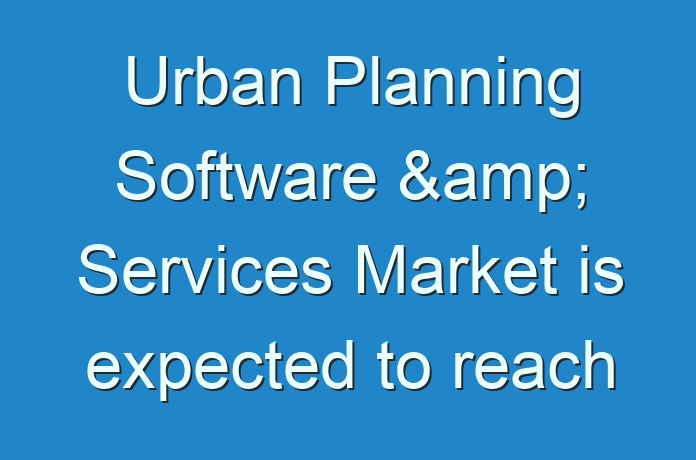
Urban Planning Software & Services Market: Introduction
Urban planning software is used to design 3D models of urban environments and plan urban layouts. City planners and architects use urban planning software to conceptualize how urban designs actually look in the real world. Urban planners can enhance urban planning proposals and design layouts for cities by using 3D visualizations according to city zoning rules. Urban planning software is often used by architects, real estate agencies, infra developers, city planners, and creative departments associated with urban development.
Users can integrate GIS software into their urban planning software to save time and automatically import structures that already exist in the real world. It also enables planners to build around the pre-existing city infrastructure.
Urban planning services is a political and technical process associated with the control of the use of land and design of the urban environment, including transportation networks, to guide and ensure the orderly development of settlements and communities.
The global urban planning software & services market is anticipated to expand at a CAGR of ~7% during the forecast period from 2019 to 2027. The global market was valued at US$ 125 Bn in 2019.
Adoption of Smart Cities
According to the Smart City Hub, 1.3 million people are moving into cities each week. There are 21 megacities with over 10 million people. Around 500 or more cities have over 1 million population; China alone is expected to have 221 cities with 1 million or more population by 2025. Customers these days have become more digitally conscious due to the increasing use of the Internet. Furthermore, information on the web is easily accessible. Users are demanding speed in their daily transactions or online activities. Smart cities are focused on solutions such as online government services, apartment sharing applications, e-hailing, home energy automation, smart parking, and real time road navigation applications. Smart cities provide solutions of public information and services, electronic service delivery, and intelligent traffic management. Rising investment in smart cities by several governments and organizing bodies is likely to drive urban planning for several cities, which leads to the growth of the urban planning software and services market.
Smart Digitalization Solutions
According to the United Nation Department of Economic and Social Affairs (UNDESA), the urbanization rate is significantly increasing. In 2015, it was around 53.9%, and in 2030 it is expected to reach 60.4%. Digitalization makes the process of urban planning simple and convenient for official bodies. Governments of the U.S., the U.K., and other European countries are trying to develop smart cards, which includes a person’s personal data such as family members, crime record, and annual income, which is projected to help in easy data handling.
For More Details, Request A Sample Report@ https://www.transparencymarketresearch.com/sample/sample.php?flag=S&rep_id=75761
Urban planning software visualizes the layout of a city. It covers online digital services, digital payment for transportation, smart parking, e-hailing, intelligent traffic management, and integrated multi-modal transport; all these solutions drive the usage of urban planning software. According to UNDESA, by 2050, around 68.4% of people around the world are likely to live in urban areas. Rapid transformation in information technology and Internet of Things will encourage people to live in urban areas, which is an advantage for the growth of urban planning software.
Urban Planning Software & Services Market Segmentation
The urban planning software & services market is segmented on the basis of software and services, which have been further divided into type, application, end user, and region. In terms of type, the software segment has been sub-segmented into cloud-based, web-based, and application-based. Based on type, the services segment has been categorized into advisory services, building planning services, digital services, and infrastructure planning services.
Based on application, the software segment has been divided into architecture, commercial interiors, urban planning, residential construction, and creative departments. Based on application, the services segment has been divided into urban planning, regional planning, and project/site planning.





